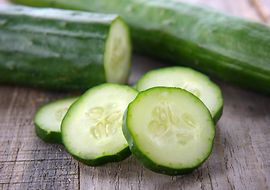Benefits for the consumers
The voice of the consumer is heard
Product recalls, dangerous household appliances, food safety scandals - over the past ten years consumer safety has increasingly gained public interest. Consumer protection organizations, testing institutes, the media and the government itself have all contributed to this trend.
When it comes to the role standards play in consumer protection, DIN Consumer Council is the one to turn to. Founded in 1974 as a permanent committee of the DIN Presidial Board, the Consumer Council of DIN (VR) represents consumer interests in DIN’s standards work at national, European and international level. At the time of its foundation the Council mostly dealt with the safety of everyday household products - now it has a much broader remit that includes services, as well as new technologies. Demographic change and rapid technological advances have brought new areas of action, such as electromobility, carbon footprints, and the increased need for data privacy. Accessibility and ambient assisted living (AAL) bring with them new technical solutions that allow elderly persons to live independently in their own home environments.
Children's toys, coffee makers, motorcycle helmets: Everyone uses objects that have been standardized. Standards ensure products are safe, environmentally sound, and fit for purpose - they also ensure legal certainty, especially in the case of services.
A wonderful world thanks to standards
 © fotolia.com/ kolesnikovserg
© fotolia.com/ kolesnikovserg
Whoever follows the advice of their dentist or pharmacist benefits from it at least twice a day. Here we are talking about the Tuft-retention test: the individual tufts (or what we often call “bristles”) of a toothbrush must be able to withstand a force of 15 newtons according to the International Standard DIN EN ISO 20126. Why? So they stay put in the head of the toothbrush and don’t end up being swallowed. In practice this works quite well. Before the bristles begin to fall out, they have usually become so bent that we have already bought ourselves a new toothbrush
 © fotolia.com/ bernardbodo
© fotolia.com/ bernardbodo
Summer is the time for BBQs and a good time to check your barbeque for safety. DIN EN 1860-1 requires, for example, that a barbeque with a foldable stand must be able to be locked in operating position to prevent tipping or collapse. In order to prevent your hotdog from falling into the coals, the clear distance between the bars of the cooking grid cannot exceed 20 mm. And according to DIN EN 1860-2, barbeque charcoal is not permitted to contain pitch, fossil coals, petroleum, coke or plastic
 © fotolia.com/A. Karnholz
© fotolia.com/A. Karnholz
One of the most important standards in stair construction is DIN 18065. It specifies requirements for stairs in buildings and was updated most recently in March, 2015. This standard specifies terminology, measuring rules, main dimensions and tolerances – ranging from the landing to the tread (or “going”) to the rise-to-tread ratio. The result: stairs are comfortable – and safe – to climb.
 © fotolia.com/sommai
© fotolia.com/sommai
No, cucumbers have not been standardized. And certainly not their straightness (or crookedness!)
Yet from 1988 to 2009 there was in fact an EU regulation that defined commercial classes for cucurbits. And in order to belong to the class “Extra” the cucumber had to be “well-formed and practically straight”. In the meantime however, the vegetable is allowed to grow as it pleases.


